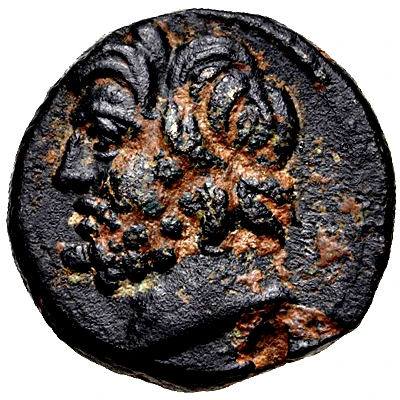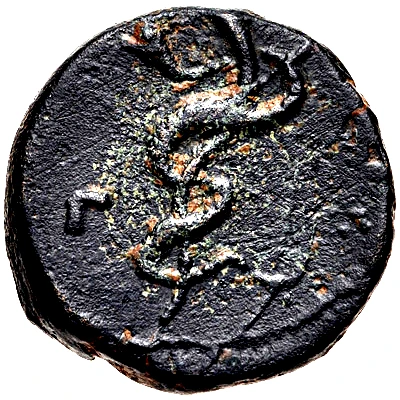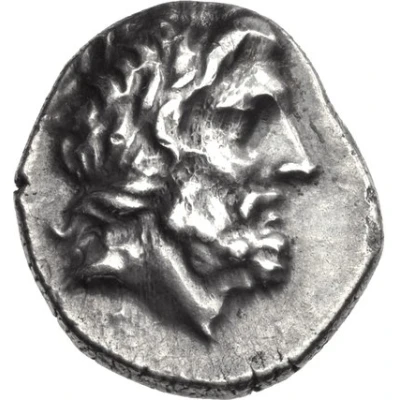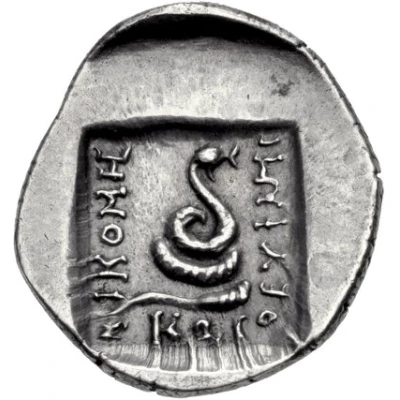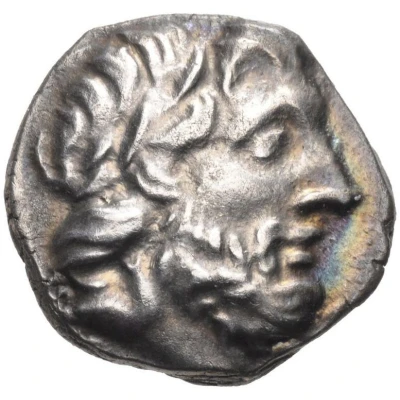
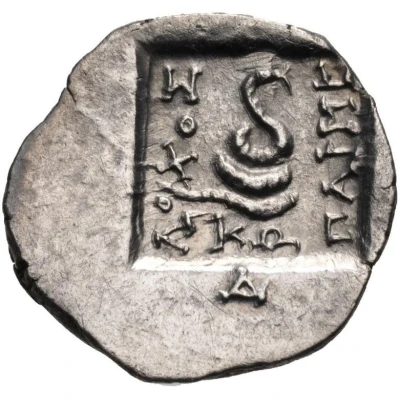

© Classical Numismatic Group, Inc.
Tetrobol - Lokhos & Parme 180 BC - 170 BC
| Silver | 2.08 g | 14.0 mm |
| Issuer | Kos (Carian Islands) |
|---|---|
| Type | Standard circulation coin |
| Years | 180 BC - 170 BC |
| Value | Tetrobol (⅔) |
| Currency | Rhodian plintophoric drachm |
| Composition | Silver |
| Weight | 2.08 g |
| Diameter | 14.0 mm |
| Shape | Round (irregular) |
| Technique | Hammered, Incuse |
| Orientation | Medal alignment ↑↑ |
| Demonetized | Yes |
| Updated | 2024-10-09 |
| Numista | N#425408 |
|---|---|
| Rarity index | 100% |
Reverse
ΚΩ below coiled serpent; to left, ΛΟΧΟΣ; to right, ΠΑΡΜΕ; all within shallow square incuse; below incuse, Δ.
Script: Greek
Lettering:
ΛΟΧΟΣ
ΠΑΡΜΕ
ΚΩ
Δ
Interesting fact
The Tetrobol coin from Kos (Carian Islands) featuring Lokhos & Parme (180 BC - 170 BC) is interesting because it showcases a unique blend of Greek and Persian influences in its design. The obverse side of the coin features a portrait of Lokhos, who was a Persian satrap (governor) of the Carian Islands, while the reverse side features an image of Parme, who was a Greek goddess of agriculture and fertility. This fusion of cultural influences reflects the complex history of the Carian Islands, which were part of the Persian Empire at the time but had a significant Greek population. This coin is a rare example of a coin that highlights the cultural exchange and blending that occurred during this period of history.
